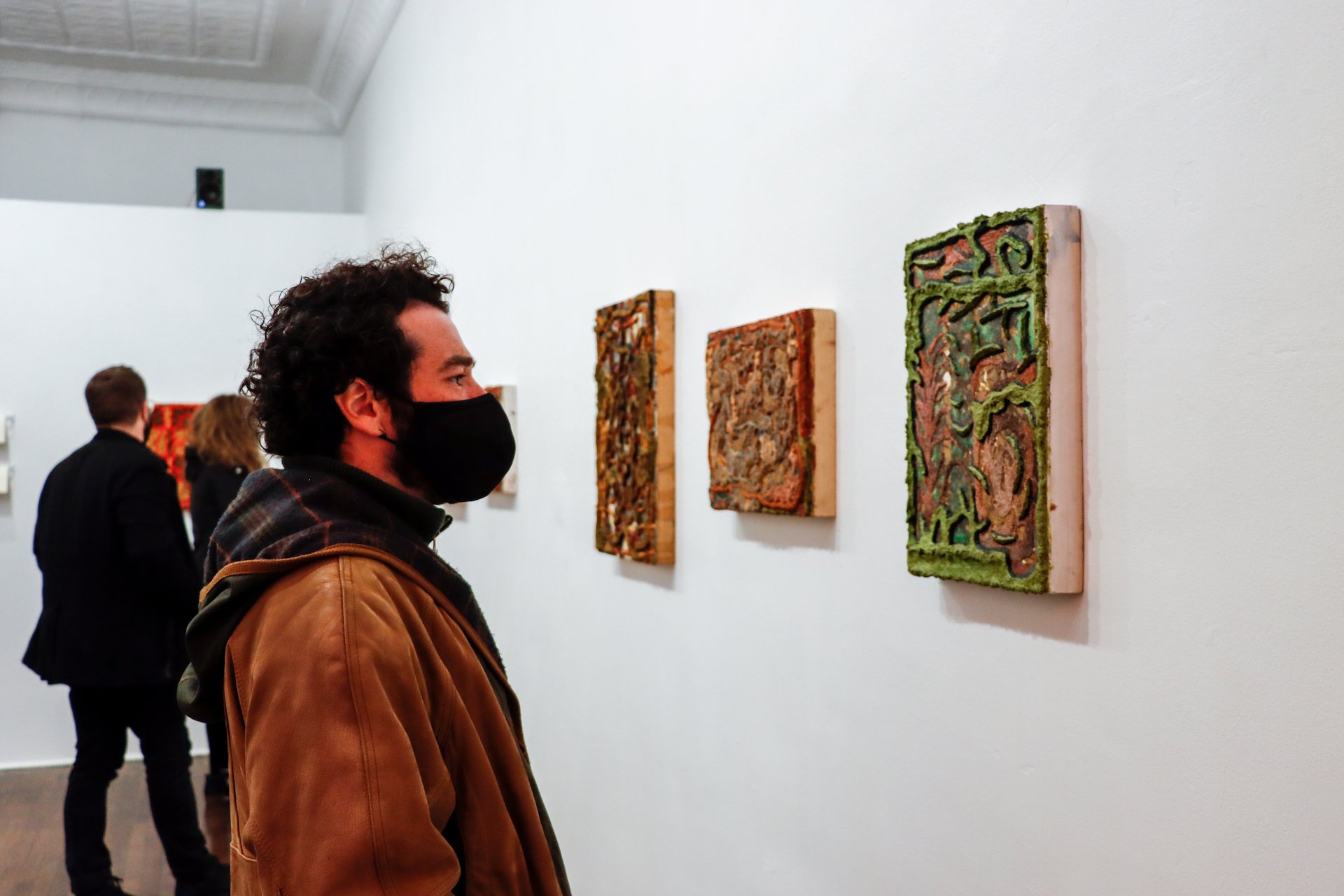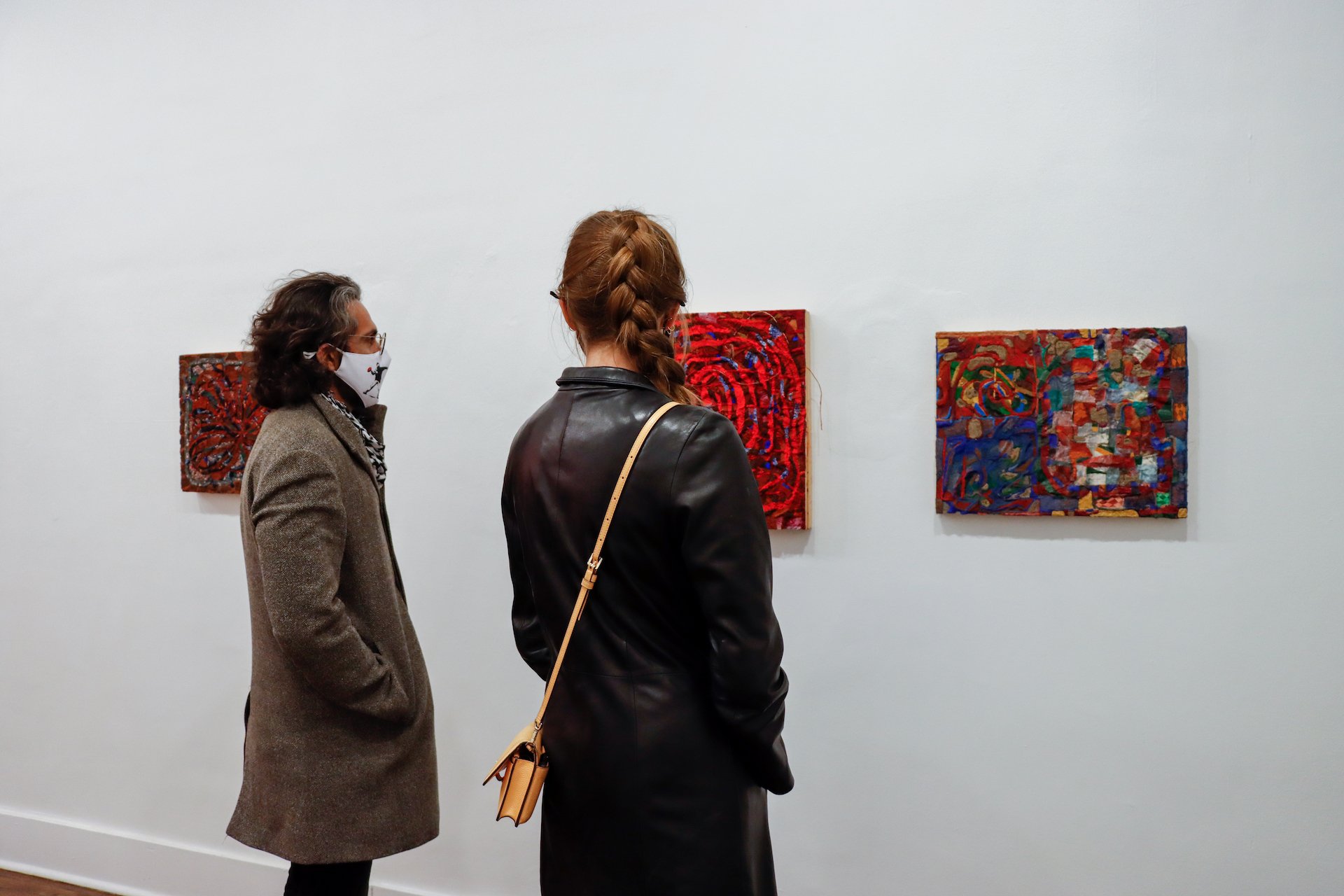Treader
ORGANIZED BY HANNAH LEE HALL AND ANNIKA JOHNSON
JANUARY 14TH - FEBRUARY 18, 2022
Hannah Hall’s paintings meet the downward gaze of a scavenging dog. They are terrestrial accretions of paper pulp, sand, yarn, and debris. Her process is sculptural and regenerative; the byproducts of one painting often seep into the next. Beneath this cycle of growth, harvest, and decay is the story of the Treader, a groundskeeper of a toxic landscape. The Treader rakes the trash and plants mutant seeds. They revel in stirring the chemical muck that boils on the earth’s surface. It’s a noisy world, captured through found audio samples of tillers, caves, digging, bugs, and gunk, processed and recorded by Annika Johnson. A co-authored manual provides instructions for the being that lives in this post-apocalyptic eden.
Generator Grant programming is presented with support from the Nebraska Arts Council and the Nebraska Cultural Endowment.
Treader Instruction Manual
Treader included an instruction manual for living in a post-apocalyptic eden, co-authored by Hannah Lee Hall and Annika Johnson.
Participants were invited to write and submit their own instructions, which were incorporated in a found sound composition released at the exhibition’s closing.
Installation Images































About the Organizers
Hannah Lee Hall lives and works in St. Paul, MN. She received a Bachelor of Fine Arts with a concentration in painting from the Rhode Island School of Art and Design (RISD) in 2010.
Annika Johnson is a musician and Associate Curator of Native American Art at the Joslyn Art Museum where she is developing installations, programming, and research initiatives in collaboration with Indigenous communities. Her research and curatorial projects examine nineteenth-century Native American art and exchange with Euro-Americans, as well as contemporary artistic and activist engagements with the histories and ongoing processes of colonization. Annika received her PhD in art history from the University of Pittsburgh in 2019 and grew up in Minnesota, Dakota homelands called Mni Sota Makoce.


